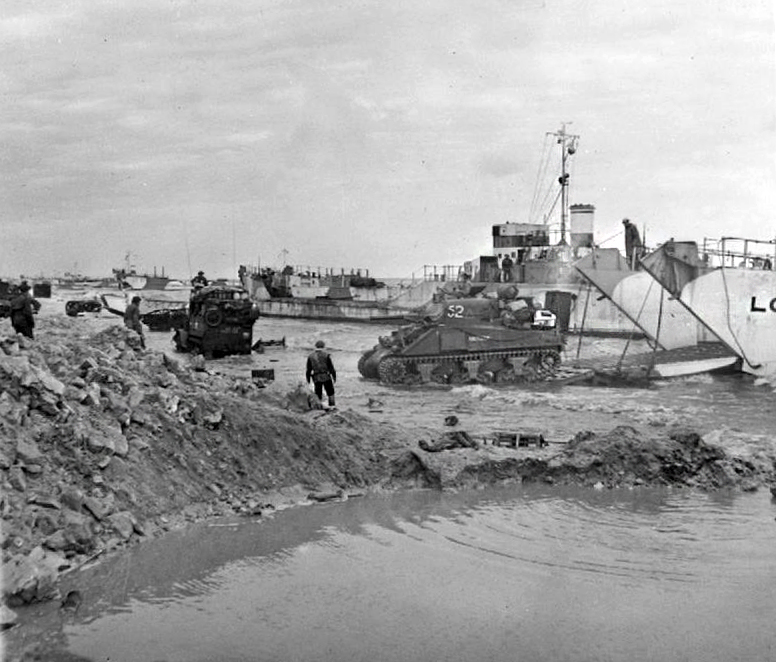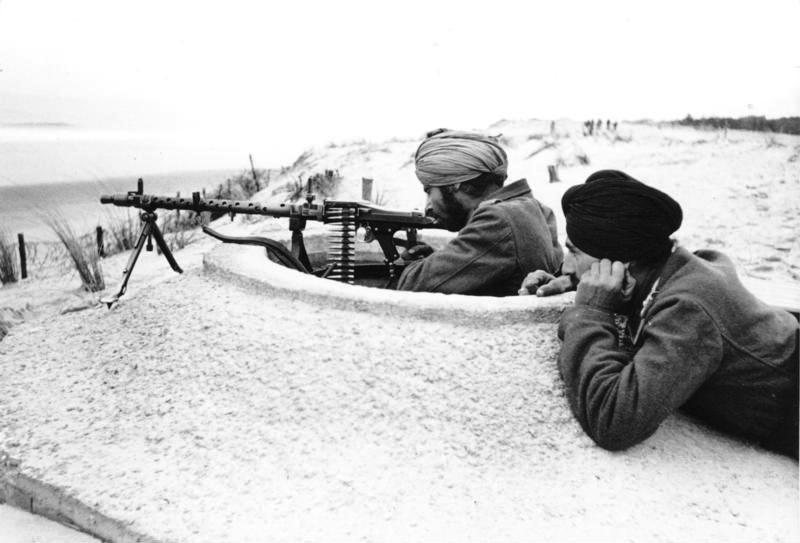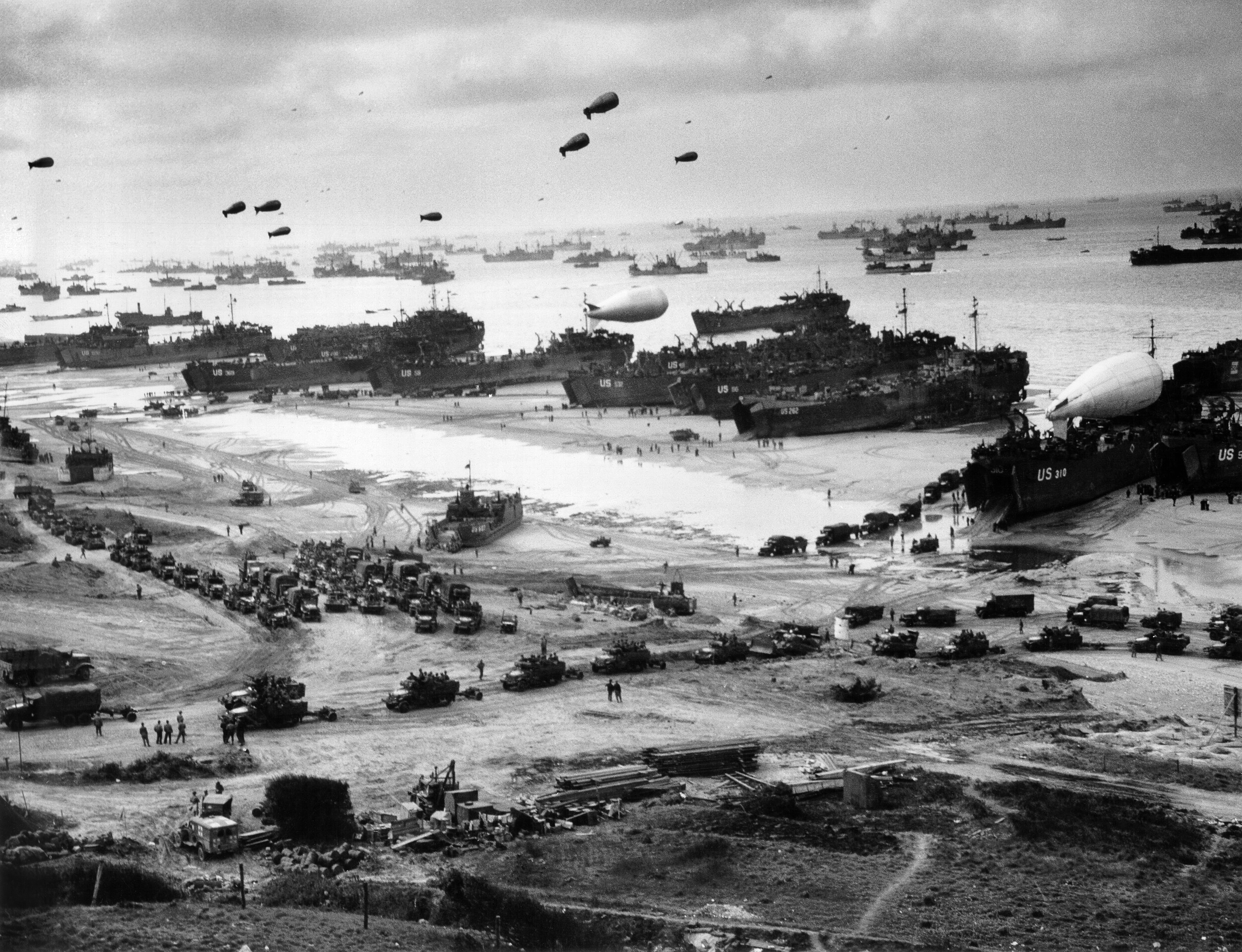What Are the Mission Goals?
As we prepare to dive into the German's first player turn, let's review what is driving the two sides' decisions.
 |
| Gold Beach on 7 June 1944. (Wikipedia) |
The full campaign game of Normandy '44 takes 22 turns, covering the period from June 6th to June 27th. For the purposes of this demo, I'll just be running the seven-turn mini-campaign, which runs through June 12th. There are "automatic victory conditions" for this scenario (ones that award victory to a player as soon as they are fulfilled) that are the same as those for the full campaign. In addition, there are "end game victory conditions", ones that will determine the winner at the end of the game if no automatic victory has taken place.
 |
| Indian soldiers serving in the German Army, manning a "tobruk" (reinforced foxhole). (Wikipedia) |
The campaign's automatic VCs reflect the overall goals of the invasion campaign. The Allied armies sought a foothold in Europe, but a foothold that could be expanded to push the Germans out of France and, eventually, force them to surrender unconditionally, as had been agreed at the Casablanca Conference of the Allied leaders in 1943. To that end, they needed not just a lodgment on the French coast, but the ability to drive into the heart of France. So the Allies win the campaign automatically if they have three or more units, in supply, on the east or south edge of the map at the end of a German turn. In other words, a penetration of the German lines so complete that, given a player turn to work with, the Germans cannot displace or isolate enemy units far beyond their at-start frontline and in a position to head towards the French interior.
For the automatic Allied victory, all beaches must be open (i.e., German troops must not recently have been in possession of any of the Allied landing grounds) and all four hexes of the city of Caen must be Allied controlled. This largest city in the landing area lay at the hub of the region's road network. Until Caen was Allied controlled, supplies could not flow forward to forces fighting in the interior.
 |
| Supplies being landed on Omaha Beach. (Wikipedia) |
The Germans, too, have automatic VCs. If they close three or more Allied beaches or Mulberries, or eliminate or reduce seven US three-step units to cadre status, or eliminate or reduce five British three-step units to cadre status, then they win. These events would represent, in the first place, the inability of the Allies to reinforce and supply their invasion force or, in the second and third cases, such a devastating loss of manpower that Allied morale would plummet.
End Game Victory
Should none of these decisive outcomes arise, at the end of the seven-turn mini-campaign the Allied player counts up victory points (VPs); if she/he has 14, the Allies have won. Otherwise, victory goes to the Germans. The Allies are awarded VPs for controlling the Allied drop zones, for linking up the US and UK beaches (defined as having a clear road from Juno Beach to St Mere Eglise obstructed by no German units or ZOCs not occupied by Allied troops), for controlling the city of Bayeux, and for each hex of city or town outside the Allied Naval Bombardment zone. They lose points for closed beaches.
Essentially, this requires the Allies (who will never get an auto victory in seven turns) to seize and hold their beach objectives and push far enough inland to link up the US and the UK forces. If they protect the beaches (don't lose VP), hold all the airborne drop zones (9 VP), fulfill the link-up conditions (3VP) and control Bayeux (2 VP), they can get the 14 VPs they need to win.
No comments:
Post a Comment